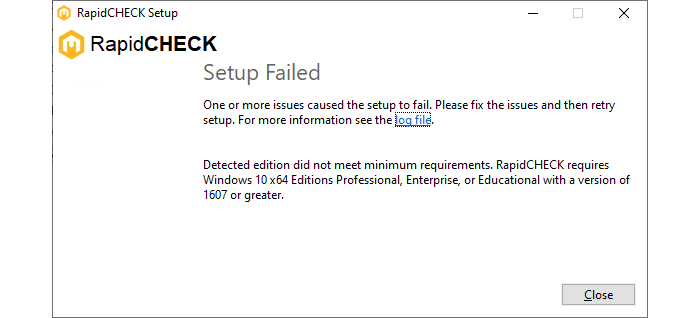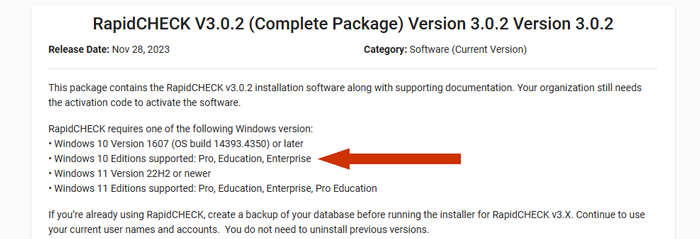The Big Beautiful Box and the Oracle of Delphi
Background
During negotiations in 2024 regarding the supply of a CT scanner, we defined the Advanced Electron Density (AED) phantom from Sun Nuclear as an accessory. Although we had previously performed all calibration measurements for our Eclipse planning system using our proven electron density phantom from CIRS (Model 062), the information in the Siemens documentation, in which the AED phantom Model 1467 from Sun Nuclear was specifically mentioned in connection with DirectDensity (DD) and, to some extent, even promoted1, promised an advantage that seemed to justify the purchase of an additional phantom: The RapidCHECK software available for the AED phantom would enable an automated evaluation process!
The typical process for determining the calibration curve is familiar: you select a series of density inserts, load them into the phantom in a specific configuration, document the position of all inserts (using a photo, form, whatever), and perform the scan. After the CT images have been loaded into suitable software, the HU number is determined ("by hand") for each insert in one or more slices using a ROI, thus generating the calibration curve. This is a time-consuming process if you plan to determine more than one curve.
We considered that, given the diverse capabilities of the new scanner (70-140 kV, multiple reconstruction kernels such as Qr40, Sm40, and Sd40 for normal reconstruction and DD, iMAR, etc.) and Eclipse 18.1 (up to 20 curves supported), automating the acquisition of the calibration curves would ultimately be a great help during scanner commissioning. This was the reason for the purchase of the AED phantom and the RapidCHECK software.
A necessary prerequisite for this plan to work was, of course, the timely delivery of the phantom, ideally before the new scanner was installed, so that we could gain some experience with the phantom and, in particular, the software on another CT scanner before things got "serious."
Unfortunately, things didn't go as planned. We would like to share our experiences with other medical physicists in a similar situation in the hope that they will be helpful.
Chronology
It was clear that when Siemens Healthineers received the order to supply the CT scanner, this order would also apply to the phantom. However, since the phantom is not produced by Siemens itself, but must be ordered by Siemens from Sun Nuclear in the US via an intermediary (in our case in Europe), a certain delay is inevitable. When placing the order with Siemens, all we could do was emphasize that the phantom absolutely had to be delivered on time if it was to be of any use in commissioning the scanner.
According to Siemens, the phantom (always meaning phantom plus software) was ordered from Sun Nuclear's European distributor in mid-December 2024.
The distributor states a "typical delivery time" of 4 to 6 weeks. Delivery would therefore have been expected by the end of January 2025. Unfortunately, when the go.Open Pro scanner was delivered at the end of February, the phantom still had not arrived.
After several urgent requests from Siemens (our contractual partner), which Siemens passed on to the distributor each time, the distributor finally stated June 4, 2025, as the "estimated shipping date," which represents a delay of 4 months.
The phantom was delivered (surprisingly) in mid-May 2025. At that point, the CT scanner had already been in operation for two months. (The calibration curve measurements began on March 7, 2025, and were carried out in the tried-and-tested manner using the CIRS phantom, without which we would have been lost.)
End of story? Not quite.
A Stubborn Installer
So now we had the phantom. It had arrived too late, but hey, we wanted to try it out, along with the RapidCHECK software. For example, to be prepared for the scanner's first tube change.
The RapidCHECK software is no longer delivered on a medium, as was common years ago, but is available for download. This has advantages (cheaper, less plastic waste, no problems with the medium, guaranteed up-to-date software version, etc.), but also disadvantages.
Anyone wanting to download the software must first authenticate themselves on the company website (it's a commercial product, after all). This cost us an extra day because the process isn't exactly customer-friendly. It's not enough to be registered as a user in Sun Nuclear's system with the correct email address; companies like to add another layer: the company account, in our case, the hospital. On the one hand, this is understandable, because the customer is the hospital, not the individual, but on the other hand, it requires a real person to link the login account to the company account so that the products are available for download to the end customer. After Sun Nuclear did this, RapidCHECK finally showed up in the Products & Devices menu of the Sun Nuclear support page,

together with a list of the available resources:

Our joy was short-lived. Shortly after double-clicking, the installer informed us that the installation couldn't even begin ...

One of the first things the installer does is to check the operating system version. If the operating system of the computer on which the software is to be installed is not included in the list of approved versions, the installation is aborted.
The installer summarizes the steps performed up to the abort in a log file. The crucial lines in our case are as follows:
[0610:7118][2025-06-03T14:56:12]i052: Condition 'Win10ReleaseIdFound >= 1607' evaluates to true.
[0610:7118][2025-06-03T14:56:12]i052: Condition '((EditionIDFound ~= "Education") OR (EditionIDFound ~= "Professional") OR (EditionIDFound ~= "Enterprise") OR (EditionIDFound ~= "ProfessionalN") OR (EditionIDFound ~= "EducationN") OR (EditionIDFound ~= "EnterpriseN"))' evaluates to false.
The last word ("false") is a show-stopper.
According to the specifications, the versions of Windows 10 on which RapidCHECK can be installed are "Pro," "Education," and "Enterprise".

Since we currently have Windows 10 Enterprise installed on all our computers, we initially didn't understand the problem. Well, while we do have an Enterprise version of Windows 10, the exact version name is "Windows 10 Enterprise LTSC" (LTSC stands for Long Term Servicing Channel).

Unfortunately, that's not the same thing.
All of the institute's 50-plus computers are supplied by Varian (they are replaced with the latest models every four years). Currently, the computers are pre-installed with Windows 10 Enterprise LTSC. Since it's already been confirmed that Microsoft will end support for Windows 10 in fall 2025, the next generation of hardware will be equipped with Windows 11. There's a good chance this will again be an LTSC version.
The installer's refusal made it clear to us: if we couldn't install the RapidCHECK software on a specific computer (e.g., a physics computer), then we couldn't install it anywhere. There are no computers with alternative OS images.
This caught us off guard.
We immediately opened three parallel "alert channels": Siemens, Sun Nuclear (via their support website), and the European distributor.
Siemens was notified that all kinds of suggested solutions were welcome. We are still awaiting a response.
On Sun Nuclear's support website we opened a case (00275784) and also asked if there was a workaround. The next day, we received a response from Pythia, the former high priestess of the Temple of Apollo at Delphi. She had worked there as an oracle and had now apparently found a job at the Sun Nuclear helpdesk. The Pythoness responded with a reference to the release notes and the following statement: "Microsoft releases many versions of OS and unfortunately, it is not possible to validate all existing OS versions." When asked whether the problem of the software not being installable would also persist under Windows 11 Enterprise LTSC, Pythia replied in the style2 of her former employer: "We don't know how Windows 11 Enterprise LTSC shall behave in combination with RapidCHECK, since this OS version has not been tested and validated for RapidCHECK." That apparently said it all from the oracle's side. When we asked again whether there were any plans to validate Windows 11 Enterprise LTSC for RapidCHECK in the future, we received no further response (not even a "Know thyself" that is typical of the Delphi oracle).

(Pythia, also known as the Oracle of Delphi, is now working with Sun Nuclear. Source: Wikipedia)
We must therefore assume, if we interpret the oracle correctly, that it would make no difference to our problem if we already had Windows 11 today. Incidentally, the combination of Windows 11 and RapidCHECK has other problems:
The European distributor offered its own interpretation of why things are the way they are, pointing to "potential security vulnerabilities in Windows 10 Enterprise LTSC" and offering a (unfortunately unworkable) suggested solution, namely the installation of a virtual machine.
The reference to potential security vulnerabilities in Enterprise LTSC is interesting in that Varian/Siemens Healthineers prefers this OS version, ships it, and runs all of its medical software on it, e.g., the oncology information system ARIA with the treatment planning system Eclipse. ARIA/Eclipse not only works with highly sensitive patient data, but is also used to create treatment plans, which can harm patients if something goes wrong with the software security. Remarkably, at our institute, neither C-RAD ("Catalyst") nor PTW (all dosimetry software) have any reservations about installing their software on our Enterprise LTSC OS platform. Only Sun Nuclear appears to have reservations, assuming that the distributor's reasoning is also Sun Nuclear's. However, in our view, it's equally possible that Sun Nuclear shied away from the validation process of "another OS version."
Just to clarify: Windows LTSC differs from normal Windows versions in that it receives only security and critical updates, not feature updates, and is designed for devices where functionality needs to remain stable and consistent (a typical situation in the healthcare environment). Varian/Siemens Healthineers prefers the LTSC versions because (as the name suggests) they offer the longest possible support from Microsoft (10 years), with security even being the top priority.
Another curious fact is that on September 30, 2024, a cooperation agreement was signed at the highest level, CEO to CEO, between Varian, a Siemens Healthineers company, and Sun Nuclear, a Mirion Medical company, "to expand Varian's comprehensive quality assurance (QA) offerings and interoperability for current and future radiotherapy solutions." (see the press release).
In our case, this cooperation means that one party (Varian) delivers an OS version with which the other party (Sun Nuclear) refuses to cooperate.
Well, the agreement was only signed eight months ago. Let's give them some time...
Postscript
We've learned a lot in the past few weeks, about Greek mythology and operating systems. In the past, we've never had any problems installing software products on our operating system versions. Even if we had been more cautious, the problem wouldn't have been noticed before purchasing the phantom. Let's be honest: An "Enterprise" in the spec sheet and an "Enterprise" in the Windows Properties give a "Check" and wouldn't have prompted further investigations.
Therefore, we believe our experiences could also be helpful for others.
We originally planned to publish a blog post comparing the two phantoms and investigating whether and to what extent the calibration curves obtained with the AED phantom and the CIRS 062 differ. Unfortunately, this hasn't been possible so far. We must therefore postpone this project until a solution to our problem is found. Therefore, we've added "Part 1" to the title, with potential for a future "Part 2".
In the meantime, we're enjoying the sight of this beautiful phantom in its "Big Beautiful Box" (as the current man in the White House would likely call the Pelican Case).
Notes
1 The phantom has a Siemens part number: PN GA805810.
2 The high priestess Pythia was known for her convoluted answers, which required interpretation. The reason for the unclear anwers, according to various sources, was this: She sat in the back room of the Temple of Apollo, without windows, on a tripod above a crack in the earth (see the painting in full). A gas escaping from this crack put the Pythia into a kind of trance. Similar conditions are easy to imagine in modern offices if there is a problem with room ventilation.

